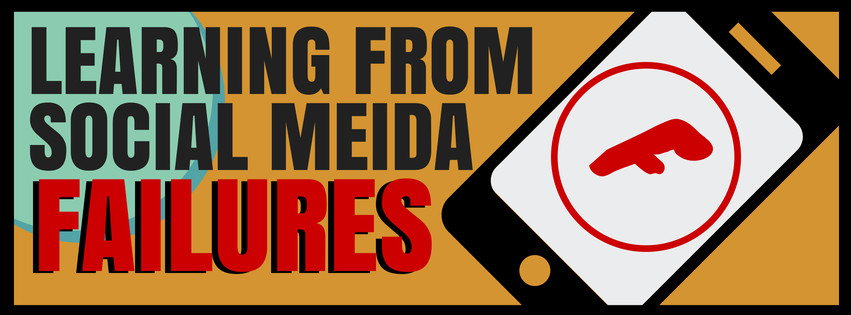The vast reach of social media often means it can help a brand make a huge impact, much like Oreo did when its marketing team posted a witty Tweet to correspond with a power outage during the Super Bowl. However, the pendulum of influence can also swing in the opposite direction, causing some brands to wish it was possible to have a “do over.” Keep reading to learn about some recent social media blunders, and how similar mistakes could be avoided in the future.
Be Careful About the Context of Graphics
Last March, London’s Luton Airport posted a picture intended to show how efficient airport crewmembers are at clearing snow from runways. As it turns out though, a picture of a plane trying to land after a snowfall was from an incident that killed a young boy
Sometimes, a graphic can just give people reason to laugh at a news outlet’s error. Fox News learned that after it posted a graphic to accompany an anti-feminism article. Although the picture was meant to promote “traditional” marriage, it actually portrayed a lesbian couple, much to the amusement of many.
These lessons just show how important it is to be as cautious as possible when it comes to choosing graphics and making sure to understand them in context.
Steer Clear from Things That Could Be Perceived as Racist
Delta Airlines found itself in hot water after posting a picture of a giraffe to represent a World Cup game in which the United States beat Ghana by a score of 2-1. An image of the Statue of Liberty was used in conjunction with the United States, but by using a giraffe in connection with Ghana, the airline was slammed for being racist.
It’s important to exercise caution on product websites, too. Sometimes that just means being careful not to mention something that could bring about a claim of racism. Hydroworx is an aquatic therapy company that has Robert Griffin III as one of its clients.
Griffin plays for the Washington Redskins, a team that had recently come under fire for the accusation that the team’s name itself is a racial slur towards Native Americans. Graphics on the website that showcase Griffin as a product user handily avoid mentioning Griffin’s team affiliation. That seems like a smart course of action, especially since sports fans will likely already know that identifying information.
Avoid Creating a Platform for Controversial Subjects
Police brutality is a subject that has recently cropped up in the media. Although coverage of it is sometimes sparse via mainstream outlets, it’s discussed extensively in alternative press. The New York Police Department got a hard lesson when it ran a #myNYPD Twitter campaign that asked people to post pictures of themselves posing with officers. Instead, activists hijacked the account, dutifully using the hashtag, but posting snapshots of apparent police brutality.
As you can see from these examples, it’s not always easy to avoid a social media outreach that ends up backfiring, but the tips above should help you feel more informed about how to not to create the conditions that might cause public relations catastrophes.


